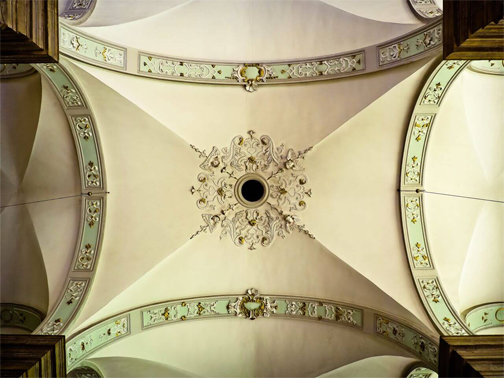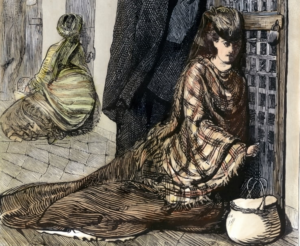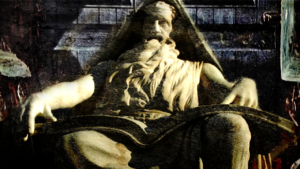Baroque Architecture

The Baroque epoch (1584-1780) was an era of lush and evocative architecture and interiors, an era when art styles and trends were all-encompassing and woven into a philosophy of life that was recognizable in everything, from music to clothing to aristocratic monuments. Descriptively you might define the Baroque style as a sensuous, organic, and highly decorative opulence, with a foundation in spiritual positivity.

Baroque’s legacy in regards architecture is somewhat contentious depending on your reaction to visual richness, or the strictness of your adherence to the modern visual credo: less is more. That was not an existing concept of the Baroque era. Generally speaking, it is difficult not to admire this period’s objective complexity, and when compared to our hyper-practical contemporary building habits, Baroque architecture inhabits a now lost fairy-tale world of fantastic, imaginative scope. A floral wedding cake in the garden sonata of history.
The Baroque style began in 17th century Italy before spreading to all of Europe. Initially, it is said, as a catholic response to the austere and somewhat sparse iconoclasm of the protestant reformation. The architecture of the Baroque took fertile seed within the unique artistic concepts of classical-gothic (or christian-pagan) symbiosis which occurred during the Renaissance. From the unique architectural style which emerged from Florence, a new floral high-classicism evolved, along with powdered wigs and beauty spots. It might be said to be a cultivated and rigid social aesthetic, which was wantonly complex and romantic, and of grandiose detail.
Where the Renaissance architects preferred Greek crosses and circles – the baroque architects used ovals and modified crosses. Where a Renaissance artist might draw a straight line, a baroque architect designed an oval, an organic protrusion, a rounded corner. The Baroque combined these small and large curves in what was called undulating order. Their interiors, generally, were a languid, mathematical marriages of different mediums. Painting was combined with sculpture which was combined with lavish guilding and all were a prominent aspect of the interior design.
During it’s heyday the Baroque style became recognizable across a vast array of art disciplines. There is Baroque sculpture, fashion, furniture, garden design, painting, and perhaps to most memorable effect, beautiful baroque music. But how to describe that unifying style, in such variant disciplines? It is very difficult, beyond saying it is recognizable, and fitting in each. It is related in its root to a spirituality, an optimism and a naturalism, as well as a willingness to intricacy based on natural patterns. A fractal elaboration that blossoms in sound, textile, stucco, wood, and stone; a geometric conch radiating fractals outward in perfect ratio, each carefully detailed segment its own whole art, which translates from the musical scales of Baroque chamber music to the lusty, colourful oil paintings of Boucher.

Baroque artists used motion, and emotion, in an organic framework of sensual, sylvan style for its own sake. In many ways it was a precursor to later naturalistic art movements such as Arts and Crafts or Jugunstil. Although baroque was more firmly rooted in the spiral stair, quadratura, and grand cartouches of the Renaissance, it has intangible hints of those later movements in its sumptuous leafy symmetry. The term Baroque actually means: ‘oddly shaped pearl’. This name encompasses accurately the movement: an oblong or oddly shaped circle, borne of opulence. It is an exaggeration of nature, not asymmetrically, but the further perfection of the oval, from the loop which is the oddity that generates life and motion.
These particular characteristics of Baroque architecture and interior trompe-l’oeil and other design is perhaps summarized emotionally as experiencing the feeling of:
Floating upon the air.
In service to this heavenly proposition Baroque artists captured heavenly moments with spiritual symbolism, without material restriction. They never failed to use light to grand dramatic effect in their buildings, which streamed down from the cupolas to bounce off elliptical walls dramatically. Their exteriors portrayed, in some sense, wealth and power in unrestrained ostentation (which might have been more reserved in the classical), but undeniably also the edifying light of emotional air-walking, in the explicit grandeur. The presentation in its foundation philosophy was of confidence, which is nearly diametrically opposed to ours. The Baroque art credo was: the more, the better.
And why not?
A challenge to restraint, self-imposed or otherwise, is a baroque concept we might do well to revisit. Going beyond reality, with an exuberant, life-filled lust for the extravagant, which becomes its own energy, solidified in an architectural energy which lasts for centuries, or more.












